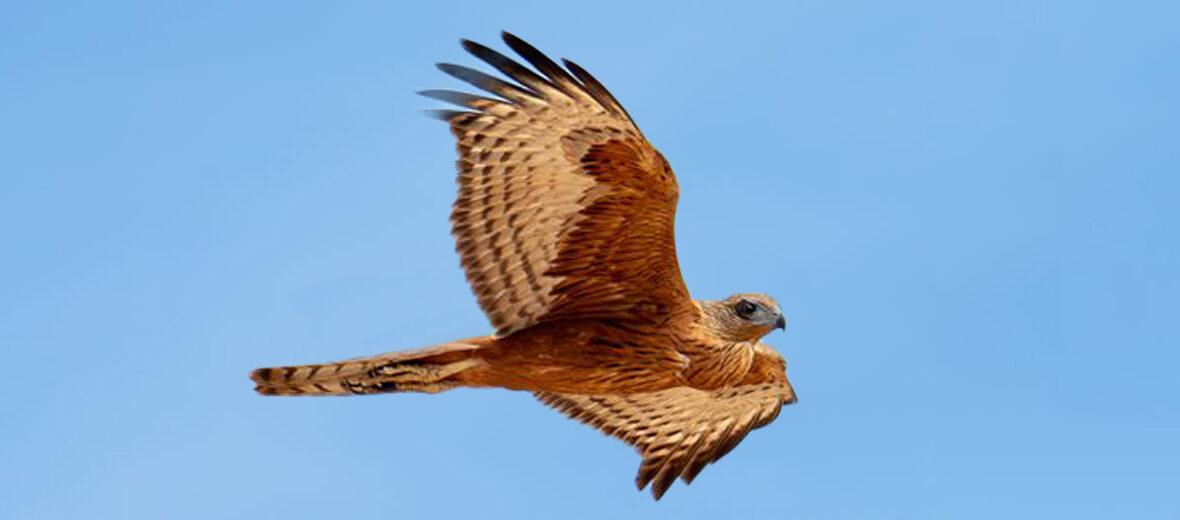
The red goshawk is widely considered to be Australia’s rarest bird of prey. They prefer the savanna woodland habitats of northern Australia, primarily close to watercourses. Sadly, these beautiful raptors face the threats of habitat loss and destruction at the hands of farming, ranching, logging, wood pulp plantations, fires, and fire suppression; hunting; trapping; and industrial pollution. The IUCN lists these birds of prey as Endangered. Their numbers are also decreasing.
First the Stats…
Scientific name: Erythrotriorchis radiatus
Weight: Up to 3.09 lbs.
Length: Up to 23.62 inches
Wingspan: Up to 53.15 inches
Lifespan: Up to 7+ years
Now on to the Facts!
1.) While functionally extinct in northern New South Wales, the remaining birds number an estimated 1,340 wild individuals. However, this number is from 2021, so it is likely that this figure is lower now.
2.) These goshawks were originally described in 1801 by the English ornithologist John Latham under the binomial name Falco radiatus.
3.) Scientists currently group the red goshawk with the black-breasted buzzard and square-tailed kite, which are both outwardly dissimilar.
4.) They are considered to be an Australasian old endemic raptor.
5.) It is currently accepted that the ancestors of these birds, perhaps together with a small grouping of other species from southeast Asia and Africa, dwelled in Gondwana and over millions of years have deviated into their current forms.
But wait, there’s more on the red goshawk!
6.) Like other raptor species, they are sexually dimorphic in that females are larger than males.
7.) They differ from other goshawks in that their wings are notably longer and broader.
Did you know…?
Red goshawks are listed nationally as Endangered under the federal Environment Protection and Biodiversity Conservation Act 1999 (EPBC). They are listed as Endangered in Queensland, and as Vulnerable in the Northern Territory & Western Australia.
8.) Their nests are constructed in an exposed fork of a emergent (taller than the rest) trees. They’re typically a stick platform that is lined with green leaves and measures 47+ inches across by 19+ inches deep.
9.) Egg laying in the north takes place between May – October, and from August – October in the east.
10.) Females lay up to 2 eggs that hatch in up to 40 days.
But wait, there’s still more on the red goshawk!
11.) Chicks fledge in up to 53 days.
12.) While parrots and pigeons are their primary prey of choice, they will also resort to preying on rats, mice, lizards, snakes, and even larger insects.
Did you know…?
These raptors have few predators, sans larger birds of prey that attack their chicks, and martens that can climb trees and attack their eggs and chicks.
13.) They attack via direct chase, a stealthy glide, or sometimes by stooping from a height.
14.) Like many other raptors, sans most owls, they are diurnal (active during the day).
15.) The protection of remaining “intact” habitats as well as the recovery of appropriate habitats via rehabilitation through regulations on land clearing is a critical conservation management tool towards their species’ survival.
Now a Short Red Goshawk Video!
Be sure to share & comment below! Also, check out the Critter Science YouTube channel. Videos added regularly!
Want to suggest a critter for me to write about? Let me know here.
Some source material acquired from: Wikipedia & IUCN
Photo credit: Tim Henderson




